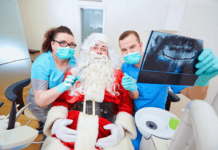The pandemic has been rough for most people, and many routines and habits have been dramatically altered or dropped altogether. While many people are returning to the office, some have been trying to adapt to their “new normal.” Many dental patients who worked from home were rolling out of bed and going down the hall to their computer and not showering or brushing their teeth until the afternoon or even in the evening.
Lots of gym routines are no longer followed. Most people thrive on routine, so with everything so up-in-the-air, stress and depression levels are on the rise.1,2 Getting dental patients back into the dental office is a great way to help our patients catch a foothold to slow their spinning worlds.
As much as we would like to go back to pre-pandemic life, it’s now more important than ever to modify our appointments to fit the needs of our patients.1 The American Psychological Association (APA) asked Americans about their perceived health since the pandemic. People stated their stress levels, weight changes, and drinking habits have gotten worse.3 We need to start asking questions about the state of our patients’ mental and physical health. Many people have been working in modified environments with fewer in-person interactions, leading to an increase in stress and depression.4
Essential workers were hit even harder in some ways. Many reported decreased sleep, unintended weight changes, and reliance on unhealthy habits. Almost one-third of the population who have stayed in the workplace since the beginning stated they perceived a decrease in their overall health.5 Some people are just getting back into their lifestyles now. Over a year of increased stress, consumption of convenience foods, and a more sedentary lifestyle can wreak havoc over mental and physical well-being.
Pandemic Habits Influence Oral Hygiene Habits
Along with life being turned around, dental hygiene routines are just as affected. Asking patients about their current home care routine is looking like it can help them to stop and think about what they are doing now. How has it changed from what they were doing pre-pandemic to now? There has been an increase in snacking and a decrease in regular oral hygiene routines.6 We need to get creative with how we get our patients back on track.1 Decreased hygiene habits with increased frequencies of fermentable carbohydrates and acid dramatically raises caries risk and the inflammation process.7 Changes in routine can be difficult to recover from.1,8
How are we approaching the subject of periodontal disease with our patients? Are we brushing it off as “there was a little more bleeding today,” or are we voicing our concern as a health care professional? “Mr. Smith, your bleeding has dramatically increased from last time to this time; what has changed?”
Our assessments are going to become more important than ever. Sitting patients up and having comparison discussions about changes such as increased bleeding and/or plaque accumulation on a normally healthy patient can be an eye-opener as to how quickly health can change.
Steer the Conversation to Education
Our appointments are so packed that it is easy to fall behind, especially when your favorite patient comes in and you want to catch up. The more of a routine we have as providers, the easier it is to seamlessly do our assessments during conversations. If we are noticing that Mrs. So-and-so has generalized bleeding and localized 4mm pockets when she normally was healthy, we want to steer that conversation to what is going on with their life.
Periodontal charting is a valuable visual aid for discussions with patients. It gives us a way to show our patients where they were last time, where they are today, and where they can strive to go. With significant changes (good or bad), we should try to sit the patient up to go over this map of their mouth to demonstrate the existence of active disease. Pull up the summary so they can know the actual amount of bleeding points and inflammation. What were their numbers last time? Celebrate the improvement or express concern over the increased inflammation and bleeding.
Patients who previously avoided periodontal disease may not be aware of their condition. Patients who have been struggling with periodontal disease may be losing the battle and need to go back to non-surgical periodontal therapy or even be referred to the periodontist for extra help. Modifications to oral health techniques, emphasis on the importance of regular home care routines, and encouraging visits to health care professionals are going to be essential.
We need to demonstrate the importance of the services we provide as comprehensive healthcare workers. How has their overall health been lately? Have a discussion about blood pressure and let them know where it is compared to where it has been. If there are significant changes, open up a dialogue about their other habits (snacking, drinking, activity, stress). If they are diabetic, do they know their last A1c results? We know there are many correlations between uncontrolled diabetes and periodontal disease. We are healthcare professionals and need to change the thought process of “just a cleaning” to “overall health and oral hygiene appointment.”
Even before the pandemic, our patients saw us more frequently than most of their other healthcare providers, and their appointments are longer with us than anywhere else. We have a responsibility to our patients and our profession to make the most out of these appointments. Now is the time we need to be gentle and understanding yet informative so we can do our part to increase overall health both mentally and physically. Let’s wow them together.
Now Check Out the Self-Study, Peer-Reviewed CE Courses from Today’s RDH!
Listen to the Today’s RDH Dental Hygiene Podcast Below:
References
- Arlinghaus, K.R., Johnston, C. A. The Importance of Creating Habits and Routine. American Journal of Lifestyle Medicine.2018; 13(2): 142–144. https://doi.org/10.1177/1559827618818044
- Vahratian, A., Blumberg, S.J., Terlizzi, E.P., Schiller, J.S. Symptoms of Anxiety or Depressive Disorder and Use of Mental Health Care among Adults during the COVID-19 Pandemic – United states, August 2020–February 2021.Centers for Disease Control and Prevention.2021; 70(13): 490-494. Retrieved fromhttps://www.cdc.gov/mmwr/volumes/70/wr/mm7013e2.htm
- One Year On: Unhealthy Weight Gains, Increased Drinking Reported by Americans Coping with Pandemic Stress. (2021, March 11). American Psychological Association. Retrieved from https://www.apa.org/news/press/releases/2021/03/one-year-pandemic-stress
- Abbott, A. (2021, February 3). COVID’s Mental-health Toll: How Scientists are Tracking a Surge in Depression. Nature News. Retrieved from https://www.nature.com/articles/d41586-021-00175-z
- Essential Workers More Likely to be Diagnosed with a Mental Health Disorder during Pandemic.(2021, March 11). American Psychological Association. Retrieved from https://www.apa.org/news/press/releases/stress/2021/one-year-pandemic-stress-essential
- HPI poll: Dentists See Increase in Patients’ Stress-related Oral Health Conditions. (2020, September 28). American Dental Association. Retrieved from https://www.ada.org/en/publications/ada-news/2020-archive/september/hpi-poll-dentists-see-increase-in-patients-stress-related-oral-health-conditions
- Survey Reveals COVID-19 is a Major Factor in Americans’ Failing Dental Health. (2021, February 8). Cision PR Newswire. Retrieved from https://www.prnewswire.com/news-releases/survey-reveals-covid-19-is-a-major-factor-in-americans-failing-dental-health-301223396.html
- Cherry, K. (2020, April 21). The Importance of Maintaining Structure and Routine during Stressful Times. Verywell Mind. Retrieved fromhttps://www.verywellmind.com/the-importance-of-keeping-a-routine-during-stressful-times-4802638












